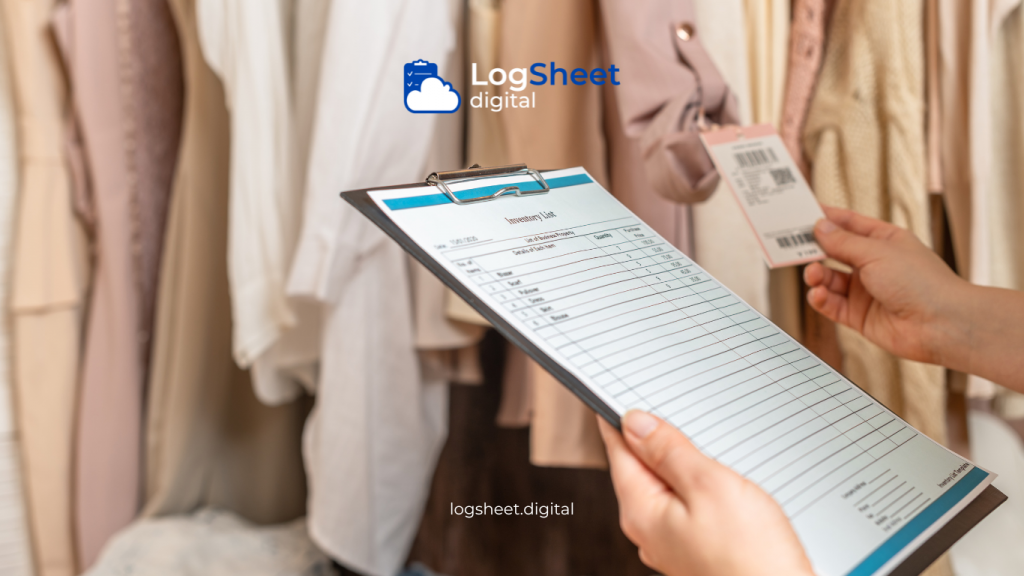In today’s digital age, asset management has undergone significant transformation with the advent of digital technology. One of the increasingly popular innovations is the use of digital logsheets. Digital logsheets are tools that allow for real-time recording, monitoring, and analysis of asset data, providing a competitive edge for companies that implement them. However, success in applying digital logsheets does not come automatically. Proper planning and strategy are required to ensure that this technology truly delivers the expected benefits. This article will discuss the successful steps in Digital Logsheets Implementation for asset management.
1. Understanding Needs and Objectives

Read More: Digital Logsheets: A Revolution in Monitoring and Maintenance of Safety Equipment
The first crucial step in implementing digital logsheets is understanding your organization’s specific needs. Every company has different assets, and the way those assets are managed also varies. Therefore, it is important to analyze your asset management needs first.
- Identify Asset Needs: Understand the types of assets you have, such as equipment, vehicles, or facilities, and how these assets are used in daily operations.
- Determine Implementation Goals: Whether your goal is to improve maintenance efficiency, reduce downtime, or enhance recording accuracy, setting clear goals will help in designing the appropriate digital logsheets system.
2. Choosing the Right Digital Logsheets Platform

Read More: Digital Transformation in Safety Equipment Monitoring: The Role of Digital Logsheets
Once you understand your needs and objectives, the next step is to choose the appropriate digital logsheets platform. Various platforms are available, each with different features and advantages.
- Evaluate Features: Ensure the chosen platform has features that match your needs, such as real-time asset condition tracking, maintenance notifications, or report generation.
- Consider Ease of Use: Choose a platform that is user-friendly for your team, with an intuitive interface and adequate technical support.
- Check Compatibility: Make sure the platform can integrate with your existing systems, such as ERP or CMMS (Computerized Maintenance Management System).
3. Training and Socialization for Employees

Read More: Advancing Towards Industry 4.0: Transformation with Digital Logsheets in Production
The Digital Logsheets Implementation of new technology requires adaptation from the entire team. Therefore, training and socialization are crucial steps to ensure that digital logsheets can be implemented successfully.
- Technical Training: Provide training for employees who will use the digital logsheets. Ensure they understand how to operate the system, input data, and use the available features.
- Socialize Benefits: Explain to employees why implementing digital logsheets is important and how it can help them in their daily work.
- Allow Time for Adaptation: Do not expect change to happen overnight. Give employees time to adapt to the new technology and support them during the process.
4. Integration with Existing Systems

Read More: Enhancing Production Transparency with Digital Logsheets: A Case Study in the Food Industry
The next step is to ensure that the digital logsheets can integrate with the management systems already in place in the company. This integration is important to ensure consistent data and efficient workflow.
- Data Consolidation: Ensure that all data from the old system can be smoothly migrated to the digital logsheets platform.
- Process Automation: Utilize the digital logsheets’ capabilities to automate certain processes, such as report generation or maintenance notifications.
- System Testing: Conduct thorough testing before the system is fully operational to identify and fix potential issues.
5. Regular Monitoring and Evaluation

Read More: Smart Solutions: Digital Logsheets for Operational Health
After implementing the digital logsheets system, it is important to continuously monitor its performance and conduct regular evaluations. This will help ensure that the system operates as expected and provides optimal benefits.
- Monitor Performance: Use data from the digital logsheets to monitor asset performance and the overall system. Identify areas that need improvement.
- Conduct Evaluation: Periodically assess whether the initial goals of implementing digital logsheets have been achieved. If not, analyze the issues and make necessary adjustments.
- Continuous Improvement: Asset management is a dynamic process. Continuously improve the system and processes based on user feedback and evaluation results.
6. Utilize Data for Decision-Making

Read More: Optimizing Warehouse and Logistics Efficiency with Digital Logsheets
One of the main advantages of digital logsheets is the ability to collect rich data that can be used for better decision-making.
- Data Analysis: Use the collected data to perform in-depth analysis of asset performance, maintenance trends, and potential future issues.
- Predictive Maintenance: Leverage data analysis for predictive maintenance, which can prevent failures before they occur and reduce downtime.
- Optimize Asset Management: With the available data, optimize your asset management, such as determining the best time for asset refurbishment or replacement.
7. Prepare for Challenges and Obstacles

Read More: Digital Logsheets for Warehouse and Logistics Management
Implementing digital logsheets may encounter several challenges and obstacles, both technical and organizational. Good preparation will help address these challenges more effectively.
- Identify Potential Obstacles: Anticipate possible obstacles, such as employee resistance, technical issues, or difficulties in system integration.
- Mitigation Plan: Prepare mitigation plans for each potential obstacle, such as providing adequate technical support or additional employee socialization.
- Security Assessment: Ensure that the digital logsheets system has adequate security measures to protect sensitive asset data.
8. Documentation and Standard Procedures

Read More: Digital Logsheets as a Management Tool in Industrial Operations
Creating documentation and standard procedures is a crucial step to ensure that the use of digital logsheets is consistent and accountable.
- Procedure Documentation: Create clear documentation regarding the use of digital logsheets, including technical guides and data maintenance policies.
- Standardize Processes: Ensure that asset recording and monitoring processes are standardized across all relevant departments or units.
- Routine Updates: Regularly update documentation and procedures in line with system developments and organizational needs.
Conclusion

Read More: Digital Logsheets: Developing Logistics Services and Enhancing Competitive Advantage
Implementing digital logsheets in asset management is a strategic step to enhance efficiency and effectiveness in managing company assets. By understanding needs and objectives, selecting the right platform, providing employee training, and integrating with existing systems, companies can achieve the maximum benefits from this technology. Regular monitoring, data analysis for decision-making, and preparedness for challenges are also key factors in the successful implementation of digital logsheets. With the right approach, digital logsheets can be a valuable tool in ensuring optimal management of company assets, contributing significantly to the achievement of long-term business goals.





leave your comments